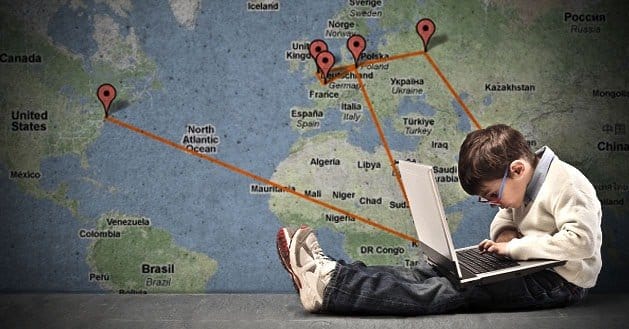 Written by ContentPowered.com
Written by ContentPowered.com
The majority of what is written about SEO and content marketing today tends to be extremely centered around Americans; at least, that’s what Americans see. Google’s regional search serves Australian content to readers in Australia, British content for readers in Britain, and so forth. Still, there is some crossover, and there are plenty of businesses who feel capable of doing business in multiple English-speaking regions.
As a business in the United States, how might you go about targeting Australian audiences? Or, as a business in Australia, how might you go about emphasizing local Aussie likes? Thankfully, the answers are mostly the same, and they’re similar to how you might accomplish Facebook growth in the United States.
Step 1: Target Australian Markets
First of all, these processes assume that you already have a business, you already have at least a basic audience established and you have a budget to play around with for growing your traffic.
Secondly, this initial step assumes you know at least the basics of running advertisements on Facebook. Using the Facebook Power Editor is a good idea; Jon Loomer can tell you all about how to use it if you don’t already know. It grants you easy access to a host of features it’s hard to use otherwise.
Alright, so you have a Facebook page and you’re looking to gain more likes in Australia. Running a few PPC campaigns is a good idea. First, create an ad that you believe will be compelling to Australian readers. You may want to set up several of these, to split-test various options.
The key for running a PPC campaign to bring in Australian likes is to target Australia regionally. Specifically, you’re going to want to exclude non-Australian countries. This is the most basic level of targeting you should do. If you’re based in Australia, have an Australian regional office or have a following in a specific area in Australia, you’ll want to put a little more effort into refined targeting. Targeting major cities like Sydney and Melbourne is a good start.
Make sure to keep your budget limited at the beginning. It only takes a few dollars – American or Australian – to see if your ads are going to have a reasonable conversion rate. Once you identify an ad that works, take that formula and expand it with new split tests to further refine it with a larger budget.
Step 2: Write Australian Content
The second part of drawing in Australian readers is going to be your content, and this will take place both on and off Facebook. In particular, your website is going to be very important for this step.
Essentially, what you want to do is dig into SEO for an Australian audience. This means writing content that caters to, and is valuable for, Australians. On this front, you’re in luck; a lot of what is valuable to Australians is valuable to a global audience. In some cases, the only difference is swapping out New York for Sydney or Perth.
You can also further refine your content by writing topics that are locally relevant. The main problem many Internet businesses have with this is the lack of perspective. A business owner in California is unlikely to have a conceptual understanding of the needs of a resident of an Australian state. Unfortunately, attempting to imitate it on any level beyond the most basic is going to come off as false, patronizing or insulting.
You can get around this in a few ways. First, you can try to keep your content as general as possible. Limit yourself to vague mentions of cities and the adoption of Australian spelling. This works, but puts you at a disadvantage against a local Australian business with a better perspective.
The second option is to hire Australians to write your content for you. This is a more expensive option, obviously, but it gets you the regional perspective that you would otherwise lack.
In every case, you’re going to want to adapt your content to the Australian audience with Australian regional and local keywords. Using colloquialisms and spelling appropriate for the target location is important. Unless you know what you’re talking about, avoid using slang or referencing current events. It would be all-too-easy to accidentally take a side on a political debate you had no idea was as charged as it is, for example. The last thing you want to do is alienate your potential readers by showing off your lack of understanding.
Step 3: Open Regional Sites
The third step is much more resource-intensive, but also the most beneficial, if you can pull it off. You are going to want to create Australian regional variations on your website, Facebook page and any other accounts you run.
If, as posited in the opening paragraphs, you’re an Australian business; congratulations. You’re already done with this part. Just keep doing what you’re doing, writing about regionally relevant events and targeting regional readers.
If, however, you’re based in the United States, the United Kingdom or any other country, you may find it very beneficial to make an Australian version of your site. The site design can look the same, and you can keep it on a subdomain easily enough, but you should avoid duplicating too much of your content. Publishing the same article twice, once with Australian spellings, is going to get you hit by a Panda penalty for duplicate content. Google doesn’t much care about the spelling, after all.
When you’re creating a separate site, it’s possible you may want to investigate regional web hosts as well. Unfortunately, there will be some latency with operating a site halfway around the world. It will take longer to upload web files, among other things. The benefits, however, come in SEO. Google tends to give preference to local sites, and it measures the definition of local in part by the physical location of the servers the site is stored on.
While having a regional site increases your latency managing it, it decreases latency for users in that region. Australians will find the site loading faster from their local servers, which is another search factor as well as a usability factor.
All of this combines to give you as much of an advantage as you can get for attracting Australian readers. Beyond that, all you can do is hope no local competitor comes along to out-do you.

